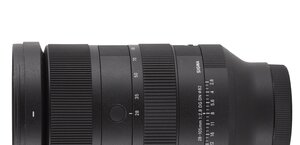Canon EF 70-200 mm f/4L IS USM
4. Image resolution
Did the new construction change this behavior? Is there any improvement? We answer no to the former and yes to the latter question. Note the picture with the lens’s performance in the middle of the frame.

Please Support UsIf you enjoy our reviews and articles, and you want us to continue our work please, support our website by donating through PayPal. The funds are going to be used for paying our editorial team, renting servers, and equipping our testing studio; only that way we will be able to continue providing you interesting content for free. |
- - - - - - - - - - - - - - - - - - - - - - - - - - - - - - - - - - - - - - - - - - - - - - - -
We again have perfect behavior at the 135-200 mm focal length, where even with the maximum aperture the picture resolution is flawless. But again we see a clear crisis at the 70 mm focal length. Although on an overall scale the MTF50 results are very good, by comparison with the 135-200 mm results, they are weak, especially at f/4. We expect more from an expensive L-grade lens.
Fortunately, we have some good news too. Perfect behavior at the largest focal length encourages the use of converters. Therefore we checked how the lens would perform with the Canon 1.4x converter. The test results are surprisingly good. The picture resolution, even at the highest aperture (f/5.6) is still perfect and this tandem works perfectly.
The next picture shows us the lens’s behavior at the edges of the frame.

We have nothing to complain here. Starting at f/5.6 the lens’s performance at all the focal lengths is efficient and equal. The only slight flaw was its performance at the maximum aperture at the 70 mm focal length. It is also clear that the converter influences the picture quality. In the center of the frame the converter’s degradation was small, but at the edges of the frame it is noticeable. The MTF values for the lens + TC1.4x set barely reach the 30 lpmm, which is considered to be the good quality borderline. The effect is a picture that is 20% worse than a picture at 200 mm. However, it is worth mentioning that the results at 280 mm are still better than the results of, for instance, the Canon EF 70-300 IS at 300 mm. The only problem here is the price. For the aforementioned set we would have to pay three times as much than for the 70-300 IS.
And, as usual, at the end of this chapter we would like to present the testing table clippings for Canon’s 20D JPG format at the Parameter 2 settings.







